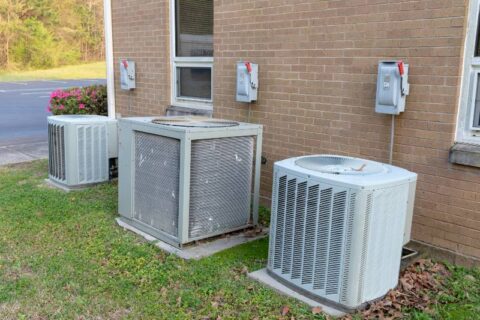Got a Clogged Sewer Line? Here’s What to Do
Every drain in your home carries wastewater from sinks, bathtubs, and toilets to the main sewer line. This large pipe sends all your waste to the municipal sewer system or your septic tank, depending on your home’s setup. When a single drain clogs, a plunger or plumber’s snake may be all you need to get things flowing again. But if the blockage is in the main sewer line, clearing the clog is a much greater challenge.
Signs You Have a Clogged Sewer Line
Sewer lines are made of large, 4- to 6-inch pipes to help prevent blockages. Still, several factors can cause the line to clog, including intrusive tree roots, foreign objects in the drain, corrosion, shifting soil, and crushed or collapsed pipes. Most blockages occur gradually, so it’s important to look for signs that a clog is imminent. Here’s what to watch out for:
- Slow-moving drains: If water pools around a drain, you know a clog is forming somewhere in the system.
- Multiple clogs at once: When numerous drains are affected, you know the problem is probably located in the main sewer line.
- Backed-up drains: Gross-looking water flowing up from your sink or shower drain is never a good sign.
- Gurgling sounds: Watch for air bubbles in the toilet when you turn on a faucet or a gurgling sound in the sink when the bathtub drains.
- Sewage odors: If your drains smell foul, this could indicate a sewer backup.
- Overflowing toilets: Do your toilets clog easily or overflow whenever you flush them? This is a clear sign of trouble.
What to Do if Your Sewer Line Clogs
If you find yourself with a clogged sewer line, there really isn’t a do-it-yourself solution. No plunger or hand-crank plumber’s snake reaches that far, and drain cleaning chemicals won’t touch the problem, either. However, that doesn’t mean you’re helpless. Here’s what you can do to keep the problem from getting any worse until a plumber arrives:
- Stop using water: Don’t use any plumbing fixtures or appliances if you suspect a clogged sewer pipe.
- Locate your sewer cleanout line: If you feel comfortable doing so, open the cap on the sewer cleanout line to release pressure and drain some of the water.
- Call a plumber: Plumbers have access to professional-grade equipment, such as electric augers and hydro-jets, to help them make quick work of clogged sewer lines.
If you suspect a main sewer line clog, you must act quickly to avoid a messy, hazardous sewer backup. Parley’s PPM Plumbing, Heating, & Cooling has you covered. With over 40 years of experience and a 100% customer satisfaction guarantee, you can trust our sewer cleaning services to get things flowing smoothly. If it turns out your sewer line is collapsed or rusted through, we can perform the sewer repair or replacement you need. Contact us at 801-226-3033 for Utah County customers and 801-229-2665 if you live in Draper to schedule plumbing services with us today.


